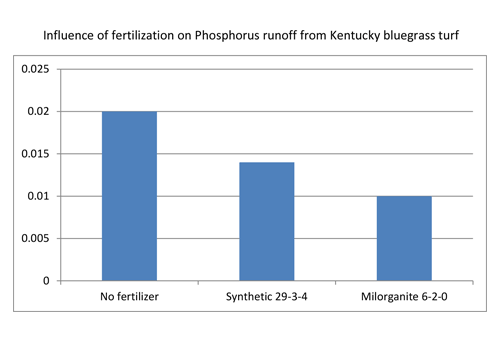Milorganite Reduces Leaching & Runoff

Well-maintained lawns leach fewer nutrients
A University of Wisconsin – Madison study concludes that there is less nitrogen and phosphorus in the runoff water from Kentucky bluegrass fertilized with Milorganite than from the same turf that received no fertilizer at all.
After a single year without fertilization, runoff from the unfertilized turf plots exceeded runoff from the fertilized turf plots by at least 30 percent. This, in turn, led to significantly more runoff losses of nitrogen and phosphorus from the unfertilized turf.
This study examined the runoff from fertilized and non-fertilized Kentucky bluegrass plots. The fertilized plots each received four applications of either a synthetic fertilizer or Milorganite. The application rate was one pound Nitrogen per 1000 sq ft. Runoff water was collected after each rain or snow melt. The amount of nitrogen and phosphorous in this runoff water was measured. As the graphs demonstrate, runoff from the unfertilized turf exceeded runoff from the plots fertilized with Milorganite by as much as 100%.



Most of the nutrients in runoff water is from the turf leaves and not fertilizer
It was also found that 60% of the nitrogen and 80% of the phosphorous in runoff water occurs when the soil is frozen. This indicates that most of these nutrients actually come from the leaf tissue itself and not from turf fertilizer.
Properly fertilized turf reduces runoff because increased turf density slows water movement, giving soil more time to absorb it. Failing to fertilize properly can lead to a decline in turf density and increased runoff. This research shows that fertilizing with Milorganite is one of the most environmentally sound ways to encourage healthy turf and reduce nutrient runoff.

